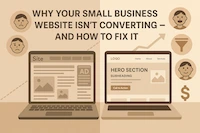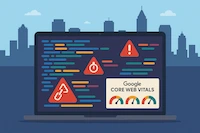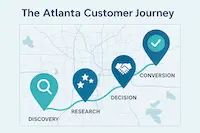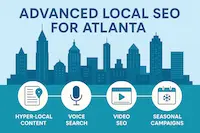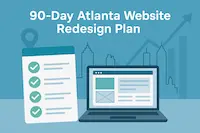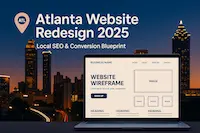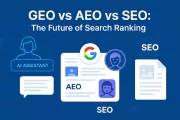
How to Create a High-Converting Contact Page in 2025 | TiltStack
How to Create a High-Converting Contact Page: A 2025 Guide
Your website’s contact page isn't just a utility; it's often the final, most crucial step in a potential customer's journey. It's the digital handshake where a curious visitor becomes a valuable lead. A poorly designed, confusing, or untrustworthy contact page can silently kill your conversions, while a well-optimized one can become a powerful engine for business growth.
At TiltStack, we specialize in building custom, hand-coded websites, which gives us complete control over every element of SEO, page optimization, and user experience. This includes crafting high-performing contact pages designed from the ground up to build trust and encourage action. Let's dive into the key elements of a contact page that truly converts.
1. Simplify Your Form: Less is More
The single biggest mistake businesses make is asking for too much information upfront. Every additional field you add to your form increases friction and gives the user another reason to abandon it.
- The Mistake: A long form asking for name, email, phone, company name, job title, budget, and a detailed message.
- The Fix: Keep your form ruthlessly simple. Only ask for the absolute essentials needed to start a conversation. You can gather more details later. For most businesses, this is:
- Name
- Message
- The Data: Studies have consistently shown that reducing the number of form fields can dramatically increase conversion rates. For example, some analyses have found that reducing form fields from 4 to 3 can result in a 50% increase in conversions.
2. Provide Multiple Contact Options
Not everyone wants to fill out a form. Cater to different preferences by providing multiple, clear ways to get in touch.
- Clickable Phone Number: Make your phone number a
tel:link so mobile users can tap to call directly. - Professional Email Address: Display a professional email address (e.g.,
contact@yourbusiness.com). A generic@gmail.comaddress can erode credibility. - Physical Address & Map (for Local Businesses): If you have a physical location, embed an interactive Google Map. This not only helps customers find you but also acts as a powerful trust signal and helps with local SEO.
3. Implement Live Chat or an AI Chatbot
In an era of instant gratification, waiting for an email response can feel slow. Implementing a chat feature is one of the most effective ways to boost engagement and conversions on your contact page.
- Why it Works: Live chat and AI Chatbots provide immediate responses, answer common questions instantly, and can qualify leads or even book appointments 24/7.
- The Impact: According to some industry reports, adding live chat to a website can increase conversions by 20% or more, as it allows you to engage with visitors at the peak of their interest.
- Learn more about our Custom AI Chatbot Solutions.
4. Build Trust with Social Proof
Before a user gives you their personal information, they need to trust you. Your contact page is the perfect place to reinforce that trust and alleviate any last-minute hesitation.
- Display Testimonials: Place a short, powerful quote from a happy client directly next to or below your contact form.
- Showcase Trust Badges: Include logos of any certifications, awards, security seals (like "SSL Secured"), or major clients you've worked with.
- Add a Human Touch: Include a photo of your team or the primary contact person. This makes the interaction feel more personal and less corporate.
5. Craft a Clear and Compelling Call-to-Action (CTA)
Don't just label your submit button "Submit." Use clear, action-oriented language that sets expectations and reinforces the value of getting in touch.
- Generic CTAs: "Submit," "Send"
- High-Converting CTAs:
- "Get Your Free Quote"
- "Let’s Talk About Your Project"
- "Schedule a Free Consultation"
- "Send a Message"
- "Start Your Growth Journey"
Your page heading should also act as a CTA. Instead of just "Contact Us," try something more inviting like "Let's Build Something Great Together" or "Ready to Start Your Project?"
6. Ensure Flawless Mobile Optimization
This is non-negotiable. A significant portion of your users will visit your contact page from a mobile device. If the page is difficult to navigate or the form is frustrating to use on a small screen, you will lose leads.
- Key Checks:
- Form fields should be large and easy to tap.
- The keyboard should automatically adapt (e.g., showing the
@symbol for the email field). - The page should load quickly and have no layout shifts.
- The CTA button should be highly visible and easy to press.
7. Optimize the "Thank You" Experience
What happens after a user submits the form is just as important. Don't just show a generic "Thanks." Use the confirmation as an opportunity to further the relationship.
- Confirmation Message: Immediately confirm that the message was received.
- Set Expectations: Tell them when they can expect to hear back (e.g., "We'll be in touch within 24 business hours.").
- Provide Next Steps: Guide them to other valuable content on your site, like your blog, a case study, or a free resource. This keeps them engaged with your brand while they wait for your response.
Why Choose TiltStack for a Custom Contact Page?
At TiltStack, we specialize in custom, hand-coded websites. We don't use WordPress or pre-built templates, which means we have full control over every aspect of your contact page's design, functionality, and performance. Our hand-coded contact pages are built for:
- Speed: Clean code means faster loading times.
- Security: Reduced reliance on third-party plugins minimizes vulnerabilities.
- Full Customization: We can integrate any tool and design any workflow you need.
- Conversion-Driven Success: Every element is strategically placed to maximize leads.
Let’s Optimize Your Most Important Page Today!
A high-converting contact page can make all the difference in turning website visitors into lifelong customers. Let us create a custom, SEO-friendly, and high-performing contact page for your business.
Contact TiltStack to start boosting your conversions today!
FAQs
Q1: How many fields should my contact form have?
A: As few as absolutely necessary. For most initial inquiries, Name, Email, and Message are sufficient. A phone number field can be added but should almost always be optional, as requiring it can decrease form completions.
Q2: Should I put my email address directly on the page?
A: Yes, it's a good practice for user trust and accessibility. To prevent spam bots from scraping it, you can use simple techniques (which we can implement) to obscure it from bots while keeping it clickable for users.
Q3: What is the single biggest mistake people make on their contact page?
A: Besides having too many form fields, the biggest mistake is a lack of trust signals. A generic page with just a form feels cold and impersonal. Adding testimonials, photos, or other social proof is crucial for encouraging users to reach out.


